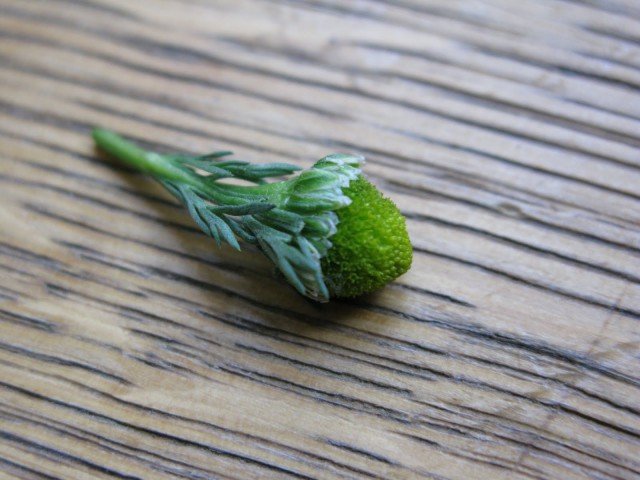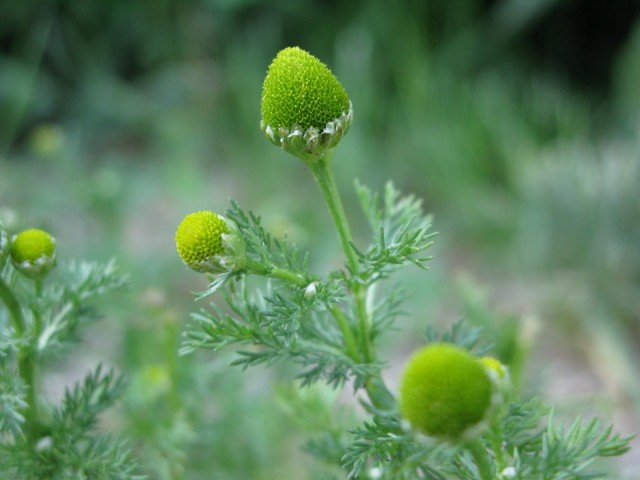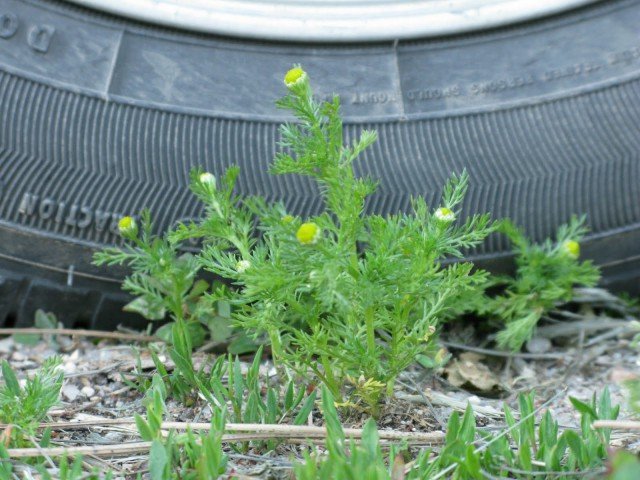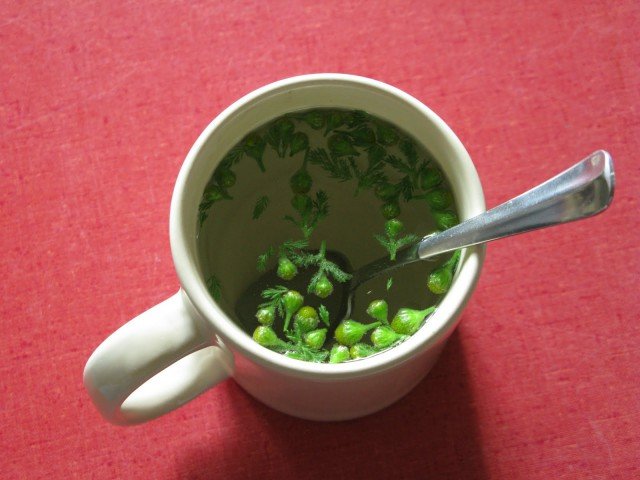Discover the Wild Leek (Ramps)
Learn how the influence of ramps has built relationships within
Learn how the influence of ramps has built relationships within
Completely Minimize the Odors…! After doing much of the same
Here is the latest presentation and virtual tour of how
Spring is here at Midwest Permaculture. It’s time for the
Sarah is a Midwest Permaculture PDC Graduate.
Recently my mother-in-law, curious about a low-growing wild plant that she had observed around her horse barn, picked one of the small, petal-less flower heads and crushed it between her fingers to see what it smelled like. Fascinated that it gave off a very sweet and distinctive fragrance, she brought the flower to me and we put our heads together to identify the plant. I recognized this plant by sight, having seen it a lot growing up in Southern and Central California, but I didn’t know what it was or anything about it.

My first thought was that our little flower head reminded me of dried flower heads in loose chamomile tea, and that the fragrance – though far too sweet – was vaguely reminiscent of chamomile. My second thought (or hope, rather) was that our sweet, fragrant flower might make a good wildcrafted tea itself.


After some Internet searching, I tentatively identified our mystery plant as Matricaria discoidea, more commonly known as “pineapple weed,” “wild chamomile,” or “disc mayweed.” One whiff of our little crushed flower confirmed it – ah yes, pineapple is what that sweet smell is! The plant is also listed in some texts as Matricaria matricarioides (for example, in Toby Hemenway’s book, Gaia’s Garden: A Guide to Home-Scale Permaculture).
Pineapple weed is native to many areas of northeast Asia and North America, including the state of Colorado, where I live and where my mother-in-law and I observed it growing. It is a hardy weed and grows in poor, compacted soils; thus, pineapple weed can be a good indicator of where the soil has been compacted or recently been disturbed. It thrives where there is not much competition from other indigenous plants, which is why so far I have not observed it growing very far away from where humans have previously cleared the land or continue to compact the soil with vehicles. The plant grows from 2 to 16 inches in height, and flowers from March through September.
Native Americans used Matricaria discoidea for a variety of medicinal and cultural purposes. Medicinal uses include treating gastrointestinal upset and gas, infected sores, fevers, menstrual pain and postpartum anemia. Many Native American nations also used pineapple weed as a perfume, insect repellant, preservative, jewelery, and in sun dance and sweat lodge ceremonies.
I was delighted to find out that pineapple weed is edible – and not only that, it makes a good herbal tea! According to several sources, one can make pineapple weed tea by steeping a small handful of young flower heads in hot water for 5 to 10 minutes. Following these directions, I made a cup of this tea myself, which tastes like a sweeter version of chamomile tea – delicious! One can also use the leaves or even whole plants to make tea, but from what I’ve read the leaves will give a slightly more bitter flavor to the finished tea.

Very pleasantly surprised by the (re)discovery of this herb, I plan on collecting seed from our wild pineapple weed patches and cultivating my own plants to make tea with.
![photo[1]](https://b2792463.smushcdn.com/2792463/wp-content/uploads/2012/06/photo1.jpg?lossy=0&strip=1&webp=1) Sarah Spotten currently lives in Colorado. Her current projects can be found at http://sarahspotten.com. Sarah Spotten currently lives in Colorado. Her current projects can be found at http://sarahspotten.com. |
22 thoughts on “Identifying and Using Pineapple Weed”
What elevation does Matricaria discoidea grow? Does it grow as high as 7400’?
My experience with Pineapple weed is from 600-1000ish feet. I did a little digging and found this California Native Plant Society page. According to them it grows up to 8135″. It’s very possible you might find it around or at least be able to grow it in your location. Good luck and let us know how it works out for you! – Milton
I have tried several times to find out how I can collect seeds from this pineapple weed plants, but unsuccessfully. When the heads dry out it does not appear that there are any seeds…. I would love to gather some to sow them in my next property. Anyone have any suggestions??? Please???
The seeds are in the dried out heads. They are tan and don’t look like much but they are there.
They look similar to chamomile seeds.
Try gathering the heads and see what happens!
Matricaria discoidea and Matricaria matricariodes and Chamomilla suaveolens are all synonyms for
the plant called: Pineapple Weed, Wild Chamomile, and disc mayweed.
That is a magnificently erroneous statement. There is a reason for the differentiation between M. disoidea, and M. matricariodes, and the chamomilla suaveolens, and the reason is in their botanical differences.
A google search for all three plant binomials leads to the Wikipedia page for pineapple weed, it seems safe to assume they are synonyms. It is common for classifications and names to change, it seems possible in this instance.
If they are indeed different plants please link us to resources or otherwise let us know of their botanical differences. It would be a good learning experience!
Encyclopedia od Edible & Medicinal Plants of the Pacific Northwest; by: T. L. Howes
5 Volumes, plants listed alphabetically in Flickr Albums
I used to see this at my grandma’s house where I grew up in Paso Robles California. I have found something that looks like it here in Oregon, but it is taller. I think it may be mayweed or Stinking Chamomile.
No, sorry, Pineapple Weed and Mayweed Chamomile (stinking chamomile) are very different. Pineapple weed does not get petals around the heads, and Mayweed Chamomile flowers look like daisies with white petals and yellow centers. The Mayweed likes to hide itself by growing amongst the Pineapple Weed because the young leaves look similar (pinnate), but I pull it out when I see it because if left to grow it attracts zillions of GNATS (very unwanted in my yard) and will take over in a couple of seasons if left to grow. Plus the Pineapple Weed makes a LOVELY tea with good medicinal properties, but the Mayweed does NOT and is not as medicinal. I prefer to give the growing space to the little pineappleheads.
Glad to know I can finally stop pulling them out of the driveway and put the little buggers to good use instead!
Can someone help me with getting plants or viable seed to establish this here. Thanks
Did you ever get this?
It was easy till most books considered Matricaria matricarioides (Lessing) Porter ex Britton and Matricaria discoides DC. as same species. Now it seems they are distinct plants and American Pineapple weed is M. discoidea, and name M. matricarioides has been misapplied to American plants. It would be useful to find differences between the two species, since they are now treated distinct.
I’ve not been able to find info on one without the other being included so I’m a bit confused about that.
However, I WAS taught that you should ALWAYS crush some of the leaves or a flowerhead. If it then smells like pineapple it is safe to use.
There are some weeds that look the same but don’t have the same aroma and some of those are toxic to either humans or their pets
Does pineapple weed do ok in shade? Is it drought tolerant? I have it growing naturally in shady areas of my buffalo/blue gramma lawn in carson city nevada where the grass does not like the shade. I am thinking of encouraging it’s spread in these areas but I water rarely and it is shady. would it continue to do well in the hot summer?… ?
Personally I’ve only seen it in the sun but in a hotter climate it might be just fine in the shade. I saw it all the time in Chicago along sidewalks and in compacted areas, which might mean that it does well in areas with less water. Sounds like this is an opportunity for you to watch it and let it tell you what it wants. When the seed heads dry out you could pinch them off and spread some of them around to other areas.
Let us know what you find out! I bet others would find it useful too.
I know its been a year, but the plants I have are in full sun, and its been very hot. 80s-90s and the plants are doing well.
Thanks: This little plant has been driving me nuts. To pull or not to pull. That was the question. I love the smell, and it’s cute. I’m keeping it. Thanks for IDing it for me!!
Hi there!
This cracks me up – I had quite nearly an identical experience deducing what pineapple weed was this spring: smelling it, recognizing pineapple, then a similarity to chamomile, then searching for weeds in the chamomile family… Anyway. Too funny. I love it. Have a good one!
Alissa
Amazing to learn about the gifts of such seemingly mundane plants right under our feet. Thoroughly enjoyed your article.
Thanks. Found your article very informative and useful.